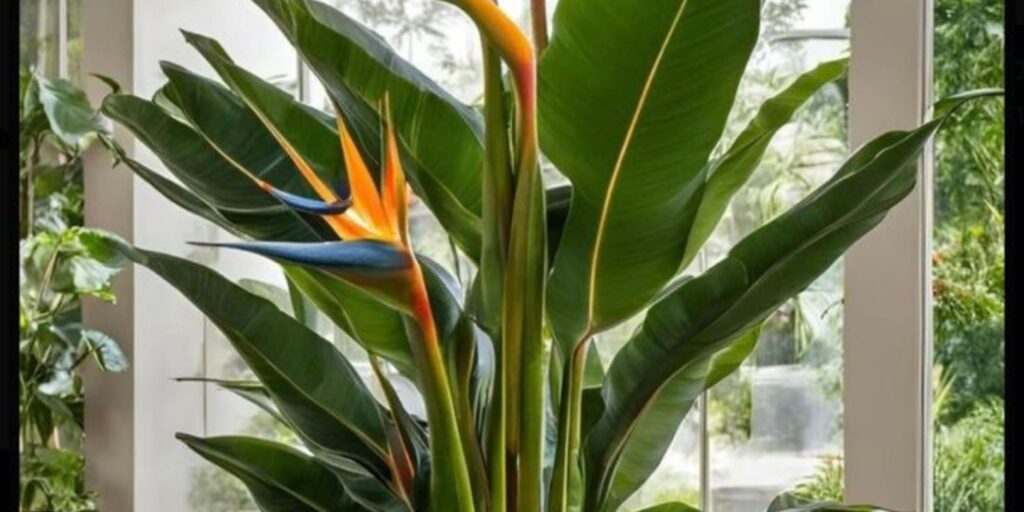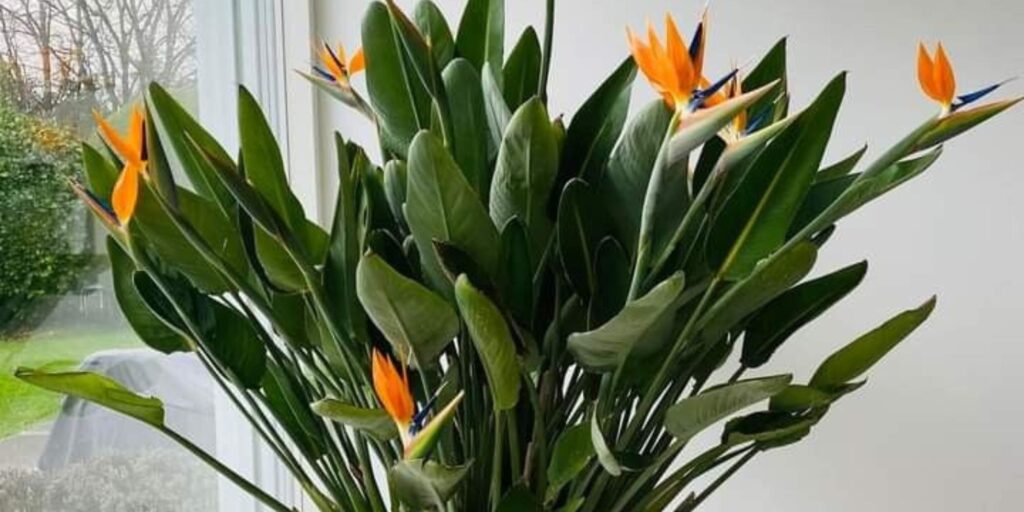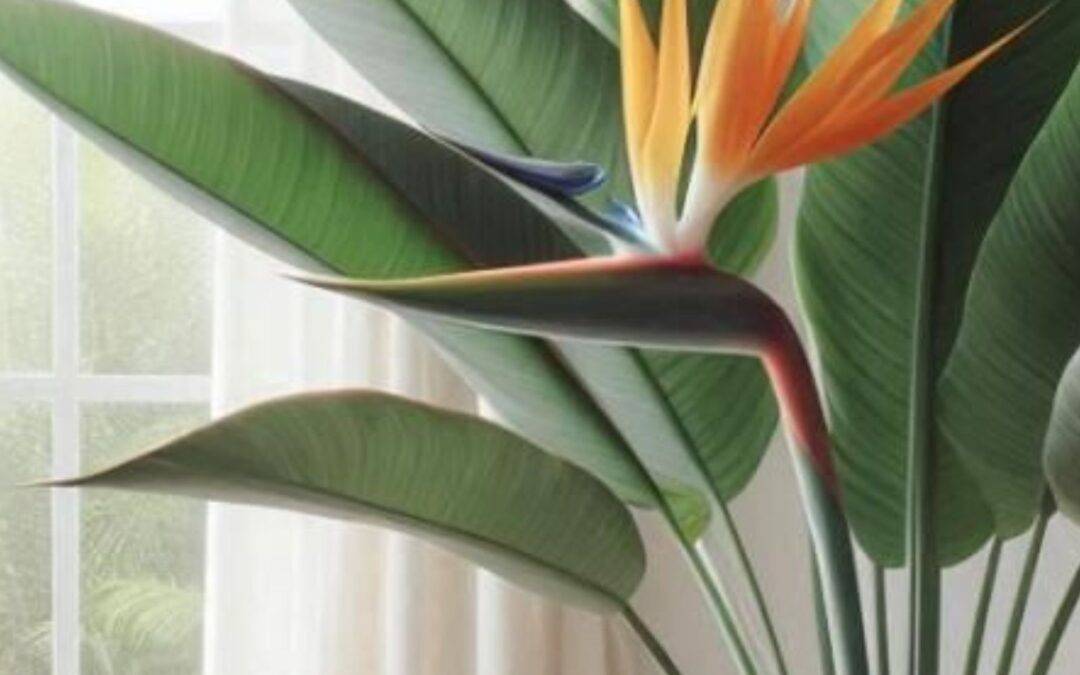Introduction
The white bird of paradise plant (Strelitzia nicolai) is a popular choice for indoor gardens. Known for its towering, dramatic leaves and stunning white flowers, this plant brings a touch of tropical beauty to any space. Whether you’re a seasoned gardener or a beginner, growing and caring for the White Bird of Paradise is a rewarding experience. In this guide, we’ll explore how to care for this plant, its benefits, and how to make it thrive in your home.
Origins and Characteristics
Native to South Africa, the White Bird of Paradise thrives in tropical climates. It is part of the Strelitziaceae family and can grow tall—sometimes reaching up to 30 feet in its natural habitat. As an indoor plant, it tends to stay smaller but still provides a striking presence.
The plant’s leaves are large, glossy, and shaped like a bird’s feather, giving it its unique appearance. When the plant matures, it produces stunning white flowers with orange accents that resemble a bird in flight. These flowers appear rarely indoors, but they are a remarkable sight when they do bloom.
Why You Should Grow White Bird of Paradise

- Tropical Aesthetic: With its striking leaves and occasional flowers, the White Bird of Paradise adds a dramatic touch to your indoor garden or living room. It brings a sense of calm and natural beauty to any space.
- Air Purifier: Like many indoor plants, the White Bird of Paradise helps purify the air. It absorbs carbon dioxide and releases oxygen, improving the air quality in your home.
- Easy to Maintain: While it may look like a high-maintenance plant, the White Bird of Paradise is actually relatively easy to care for. With the right conditions, it can thrive with minimal effort.
- Adaptable: This plant is quite adaptable to various environments. It can handle indirect light and even tolerate some neglect in watering, making it a great option for busy individuals.
Best Environment for Your White Bird of Paradise
To thrive indoors, the White Bird of Paradise needs to be placed in an environment that mimics its natural habitat. Let’s break down the essential factors:
- Lighting: This plant loves bright, indirect light. It can tolerate some direct sunlight, but too much can scorch the leaves. If possible, place the plant near a large window that gets plenty of light but is not exposed to harsh midday sun.
- Temperature: The White Bird of Paradise enjoys warm temperatures between 65°F to 70°F (18°C to 21°C). Keep it away from cold drafts or sudden temperature changes, as this can stress the plant and stunt its growth.
- Humidity: Since it originates from tropical climates, the White Bird of Paradise thrives in higher humidity levels. If your home is dry, especially in winter, consider using a humidifier or placing the plant on a humidity tray filled with water and pebbles.
Potting and Soil Requirements
Choosing the right pot and soil is crucial to the plant’s growth. Here’s what you need to know:
- Pot: Use a large, well-draining pot. The White Bird of Paradise has an extensive root system, so it needs space to spread out. Ensure the pot has drainage holes to prevent water from accumulating at the bottom, which could lead to root rot.
- Soil: A well-draining potting mix is ideal. Use a mix formulated for tropical plants, or create your own by combining regular potting soil with perlite or sand. This ensures the soil doesn’t retain too much moisture, which is essential for healthy roots.
Watering Your White Bird of Paradise
Watering is one of the most important aspects of plant care. Here’s how to do it right:
- When to Water: The White Bird of Paradise prefers to dry out a bit between waterings. Water it when the top inch of the soil feels dry. Be sure not to overwater, as this can lead to root rot.
- How Much Water: Water thoroughly until it begins to drain from the bottom of the pot. Make sure the excess water drains completely, as standing water can harm the roots.
- Avoid Watering in Winter: In colder months, reduce the watering frequency. The plant’s growth slows down during this time, and overwatering can cause damage.
Fertilizing the White Bird of Paradise
To keep your White Bird of Paradise healthy and growing, you should fertilize it during the growing season (spring and summer). Use a balanced liquid fertilizer, diluted to half strength, every 4–6 weeks. Avoid fertilizing in the fall and winter when the plant is not actively growing.
white bird of paradise plant: Pruning and Maintenance
The White Bird of Paradise doesn’t require frequent pruning, but there are a few tasks you can do to keep it looking its best:
- Remove Dead Leaves: Regularly remove any yellow or brown leaves to maintain the plant’s appearance and prevent disease.
- Trim the Tall Growth: If the plant becomes too tall or leggy, trim it back slightly. This will encourage new growth and keep the plant from becoming too unwieldy.
- Repotting: As the plant grows, you may need to repot it every 2–3 years. Choose a pot that’s slightly larger than the previous one to allow room for growth. Always check the roots before repotting and trim any that appear to be diseased or overcrowded.
white bird of paradise plant: Troubleshooting Common Issues
Even though the White Bird of Paradise is relatively low-maintenance, there are some common issues to watch for:
- Yellow Leaves: This is often a sign of overwatering or poor drainage. Check the soil moisture and adjust your watering schedule. Yellow leaves can also indicate a lack of nutrients, so consider fertilizing the plant.
- Brown Tips: Brown leaf tips are typically a sign of dry air or underwatering. Increase humidity around the plant or adjust your watering routine to correct the issue.
- Pests: While pests are not common, the White Bird of Paradise can occasionally attract spider mites, aphids, or mealybugs. Check the plant regularly for signs of pests and treat with insecticidal soap or neem oil if necessary.
Propagating the White Bird of Paradise

Propagating the White Bird of Paradise is a slow process, but it can be done by dividing the plant during repotting. Carefully separate the root ball into sections, each with a healthy root system and shoot. Replant these divisions in their own pots with fresh potting mix.
white bird of paradise plant toxic to cats
The White Bird of Paradise plant is toxic to cats if ingested. It contains compounds that can cause mild to moderate symptoms of poisoning in cats, including drooling, vomiting, and stomach discomfort. While it is not typically fatal, it’s important to keep the plant out of reach of pets. If you suspect your cat has eaten any part of the plant, it’s best to contact your veterinarian for advice. To ensure your furry friends’ safety, consider placing the plant in an area where your cat cannot access it or opt for non-toxic plants if you have curious pets at home.
white bird of paradise plant: is Toxic to Dogs
The Bird of Paradise plant is toxic to dogs if consumed. It contains compounds that can cause a range of symptoms, including drooling, vomiting, and diarrhea. While the plant is not usually life-threatening, ingestion can lead to discomfort and digestive issues for your dog. If you suspect your dog has eaten any part of the plant, it’s important to contact your veterinarian immediately for guidance. To prevent accidents, keep the Bird of Paradise out of reach of your pets, or choose pet-safe plants if your dog tends to nibble on houseplants.
Heliconia plants similar to bird of paradise plant
Heliconia plants are often compared to the Bird of Paradise due to their similar tropical appearance and vibrant, striking flowers. Both plants belong to the same family, Strelitziaceae, and share a similar structure with large, banana-like leaves and eye-catching blooms that come in bold colors like red, orange, and yellow. While the Bird of Paradise typically has a more bird-like flower, Heliconia flowers are shaped like claws or lobster’s claws, giving them a unique and exotic flair. Both plants thrive in bright, indirect light and humid conditions, making them ideal choices for tropical-style gardens or indoor spaces. Despite their similarities, Heliconia plants tend to be a bit more heat-tolerant and require slightly more humidity than Bird of Paradise.
Difference between bird of paradise and Heliconia
While Bird of Paradise and Heliconia share a similar tropical aesthetic, they have key differences. The most obvious distinction is in their flowers: Bird of Paradise flowers resemble a bird in flight, with orange and blue petals, while Heliconia flowers are shaped like claws or lobster’s claws, typically in vibrant shades of red, yellow, or orange. Additionally, the leaves of Bird of Paradise are large, glossy, and banana-like, while Heliconia leaves are more elongated and stiff. In terms of care, both plants thrive in warm, humid environments with bright, indirect light, but Heliconia tends to require more humidity and warmth than Bird of Paradise. While both plants are native to tropical regions, Bird of Paradise is native to South Africa, and Heliconia hails from Central and South America.
white bird of paradise plant: Conclusion

The White Bird of Paradise is an eye-catching, easy-to-care-for plant that can thrive indoors with the right attention. With its large, dramatic leaves and occasional stunning blooms, it adds a touch of tropical beauty to any room. By following simple care guidelines and troubleshooting common issues, you can enjoy this plant’s elegance and charm for years to come.

